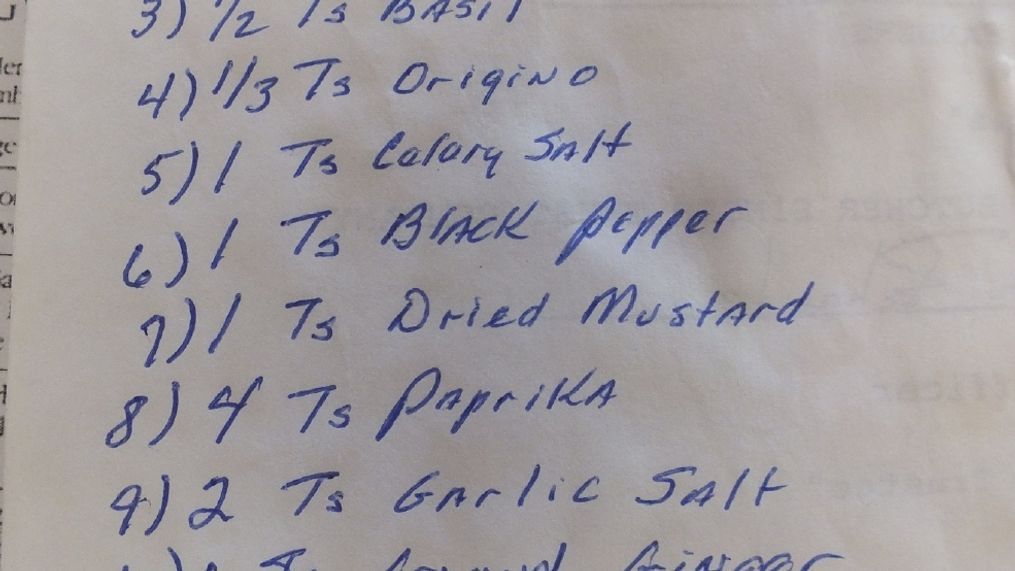Spicy, tangy, and oh-so-versatile, mustard is the condiment that adds a punch to everything from hot dogs to salad dressings.
But have you ever wondered what exactly dry mustard is?
Prepare yourself for a mouthwatering journey as we explore not only the origins and uses of dry mustard, but also discover some equally enticing alternatives that will leave your taste buds begging for more.
Get ready to delve into the world of mustard magic!
what is dry mustard
Dry mustard is a powdered form of mustard made from grinding mustard seeds.
It is widely used as a spice in cooking to add a tangy and slightly spicy flavor to dishes.
Dry mustard can be used in a variety of recipes, such as dressings, marinades, and dry rubs.
However, if you don’t have dry mustard on hand, there are several alternatives and substitutes available.
Prepared mustard can be used as a substitute, with 1 tablespoon of prepared mustard equating to 1 teaspoon of dry mustard.
Mustard seeds can also be ground into a powder, with yellow mustard seeds providing a milder flavor and black mustard seeds offering a stronger taste.
Other alternatives include turmeric, horseradish powder, wasabi, and dried ginger.
When substituting dry mustard for prepared mustard, it is important to adjust the amount of liquid and other ingredients accordingly.
Key Points:
- Dry mustard is powdered mustard made from grinding mustard seeds.
- It is used as a spice in cooking to add tangy and slightly spicy flavor.
- It can be used in dressings, marinades, and dry rubs.
- Alternatives to dry mustard include prepared mustard, mustard seeds ground into a powder, turmeric, horseradish powder, wasabi, and dried ginger.
- When substituting dry mustard for prepared mustard, adjust the amount of liquid and other ingredients.
- Yellow mustard seeds provide a milder flavor, while black mustard seeds offer a stronger taste.
what is dry mustard – Watch Video


Pro Tips:
1. Contrary to its name, dry mustard is not actually a dried version of the yellow mustard condiment commonly used on hot dogs and sandwiches. Instead, it is made from the ground seeds of the mustard plant.
2. Dry mustard has been used for centuries as a natural remedy for various ailments. It was believed to have antibacterial properties and was often applied as a paste to treat minor skin infections and wounds.
3. The pungent flavor of dry mustard comes from the chemical reaction that occurs when water is added to its powdered form. This reaction releases volatile compounds known as isothiocyanates, which give mustard its distinct taste and aroma.
4. Dry mustard is a versatile ingredient in cooking, used in a variety of cuisines around the world. It is a key component in many spice blends, such as curry powder, and is often used to enhance the flavor of sauces, dressings, marinades, and pickles.
5. Mustard has a surprising historical significance. During the Middle Ages, dry mustard, along with vinegar, was believed to be a good remedy for food poisoning. Its popularity spread so much that around the 13th century, mustard shops began to appear across Europe, offering various types of mustard for sale. These shops later evolved into the condiment stores we see today.
1. Prepared Mustard As A Substitute
When you find yourself in need of dry mustard but don’t have any on hand, fret not! Prepared mustard can come to your rescue. Simply use 1 tablespoon of prepared mustard as a substitute for 1 teaspoon of dry mustard in cooking mixtures. This convenient alternative allows you to continue with your recipe without sacrificing flavor.
Prepared mustard offers a similar tanginess and mild heat that dry mustard provides, making it an excellent choice for subbing in a pinch. Whether you’re making dressings, marinades, or rubs, the versatility of prepared mustard as a substitute will surely save the day.
2. Mustard Seeds For Homemade Dry Mustard
If you prefer the art of DIY in your kitchen endeavors, grinding mustard seeds into a powder can create your very own dried mustard. Choose between yellow or black mustard seeds, as each variety imparts a unique flavor profile to your dishes.
- Yellow mustard seeds, with their mild flavor, offer a gentle kick to your recipes.
- On the other hand, black mustard seeds possess a stronger, more pungent flavor that can add a boldness to your culinary creations.
Experiment with both to find the perfect intensity for your taste buds.
3. Using Turmeric For A Zesty Flavor
For those seeking an alternative with a vibrant color and zesty flavor, turmeric comes to the rescue. Adding turmeric to your recipes can provide a similar taste to dry mustard while infusing your dishes with a beautiful golden hue.
Turmeric not only brings a unique flavor, but it also boasts various health benefits. Known for its anti-inflammatory properties and potential antioxidant effects, it’s an excellent addition to any spice cabinet.
- Turmeric provides a vibrant color and zesty flavor.
- It adds a beautiful golden hue to dishes.
- Turmeric has anti-inflammatory properties.
- It may have antioxidant effects.
“For those seeking an alternative with a vibrant color and zesty flavor, turmeric comes to the rescue.”
4. Horseradish Powder As A Spice Substitute
When trying to recreate the sharpness of dry mustard, horseradish powder is a perfect alternative. Known for its strong and pungent flavor, horseradish powder adds a delicious punch to your dishes, similar to dry mustard.
Aside from its fiery taste, horseradish also offers potential health benefits. It contains compounds that can aid digestion and alleviate sinus congestion. Therefore, incorporating horseradish powder into your cooking not only enhances flavors but also promotes overall well-being.
5. Enhancing Flavors With Wasabi
If you’re looking to add a distinctive and fiery flavor to your dishes, consider using wasabi as a substitute for dry mustard. Wasabi is commonly used in sushi and Japanese cuisine and can provide a delightful heat and complexity to your recipes.
It’s important to note that wasabi has a strong kick, so it should be used in moderation to avoid overpowering your taste buds. However, if you’re seeking an intense and bold flavor, this substitute is sure to impress.
To summarize:
- Wasabi is a unique and sharp alternative to dry mustard.
- It is commonly used in sushi and Japanese cuisine.
- Use it sparingly to avoid overwhelming the taste buds.
- Provides an intense and bold flavor.
“If you’re in the mood for adding a unique and sharp flavor to your dishes, wasabi is an excellent alternative to dry mustard. Known for its use in sushi and Japanese cuisine, wasabi can bring a delightful heat and complexity to your recipes.”
“Be careful when using wasabi, as it has a potent kick that can overwhelm the taste buds if used excessively. However, if you desire an intense and bold flavor, this substitute will not disappoint.”
6. Adding Zest With Dried Ginger
If you’re looking for a substitute that brings both heat and a zesty flavor, dried ginger is an excellent choice. With its warm and spicy notes, dried ginger can complement a variety of dishes in a way that rivals dry mustard.
Dried ginger is widely used in Asian cuisine and is a staple in many spice cabinets. Its versatility makes it a perfect alternative in recipes where dry mustard is called for, especially when you want to infuse your dishes with a distinct gingery essence.
Some key points about dried ginger:
- It brings both heat and a zesty flavor to dishes
- Widely used in Asian cuisine
- Perfect alternative to dry mustard
- Versatile and complements a variety of dishes
- Adds a distinct gingery essence
In summary, dried ginger is a great substitute for dry mustard, especially if you want to add a warm and spicy flavor to your dishes. It is widely used in Asian cuisine and offers a versatile option for enhancing the taste of your recipes.
7. Substituting Dry Mustard For Prepared Mustard
There may be instances when you have prepared mustard but need dry mustard instead. In such cases, you can convert the measurement by using 1 teaspoon of dry mustard for each tablespoon of prepared mustard.
In addition, you’ll need to add 2 teaspoons of liquid, such as water or vinegar, for each teaspoon of dry mustard used in the recipe. Mixing the dry mustard and liquid together will create a paste-like consistency. Letting the mixture sit for at least 30 minutes allows the flavors to meld and mellow out the heat.
8. Proper Ratio For Substitutions
The correct ratio is crucial when substituting dry mustard for other alternatives. Remember, 1 teaspoon of dry mustard is equal to 1 tablespoon of prepared mustard. Utilizing this ratio ensures that the flavors of your dish remain well-balanced.
- Always use the correct ratio when substituting dry mustard.
- 1 teaspoon of dry mustard equals 1 tablespoon of prepared mustard.
- Maintaining this ratio ensures well-balanced flavors in your dish.
9. Allowing Mixture To Mellow Out
When combining dry mustard with liquid, it’s essential to allow the mixture to sit for at least half an hour. This resting period allows the heat of the dry mustard to mellow out, resulting in a smooth and flavorful addition to your culinary masterpiece.
During this time, the flavors will meld together, producing a harmonious blend. Take advantage of this waiting period to prepare other ingredients or clean up your workstation, further maximizing your productivity in the kitchen.
10. Additional Ingredients For Sweetness
If you prefer a hint of sweetness in your mustard substitute, you can add sugar or honey. These additions balance the heat and tanginess, resulting in a more well-rounded and pleasing taste.
Experiment with different sweeteners to find the perfect complement to your dish. You’ll be surprised by how a touch of sweetness can elevate the flavors and create a delightful harmony.
Dry mustard is a versatile ingredient that adds a distinct flavor to a variety of dishes. However, when you don’t have it available, prepared mustard, mustard seeds, turmeric, horseradish powder, wasabi, and dried ginger make excellent substitutes. Remember the correct ratios and let the mixtures mellow out to achieve the best results. With these alternatives in your repertoire, you can confidently embark on your culinary adventures, knowing that the absence of dry mustard will never hinder your flavorful creations.

You may need to know these questions about what is dry mustard
Can you substitute regular mustard for dry mustard?
Yes, you can substitute regular mustard for dry mustard in cooking mixtures. For every teaspoon of dry mustard required, you can use 1 tablespoon of prepared mustard. In case you have whole mustard seeds, they can be easily ground to create the desired dried mustard. So, whether you have prepared mustard or mustard seeds on hand, you have suitable alternatives to replace dry mustard in your recipes.
Why do recipes call for dry mustard?
Recipes call for dry mustard for several reasons. Firstly, unlike prepared mustards, dry mustard is used in rubs or sauces to provide a more subtle, acidic background flavor. Its intensity in larger quantities adds a hint of heat, making it particularly valuable in adding complexity to dishes. Additionally, dry mustard has the advantage of being shelf-stable and easy to store, unlike prepared mustards that need refrigeration. This makes it a convenient ingredient for recipes that require a longer shelf life or do not need the creaminess or strong flavors of prepared mustards. Overall, the use of dry mustard allows for greater control over the flavor profile of a dish, offering a versatile and nuanced addition to various culinary creations.
Is Dry mustard stronger than regular mustard?
Dry mustard, also known as ground mustard, is generally stronger than regular prepared mustard. This is because dry mustard is made solely from ground mustard seeds, which contain the compound responsible for its pungent flavor and heat. On the other hand, regular mustard often incorporates additional ingredients such as vinegar, turmeric, paprika, salt, and garlic, which can dilute its potency. As a result, a tablespoon of dry mustard packs more punch than a tablespoon of prepared mustard, making it a preferred choice for those seeking a stronger flavor profile in their recipes.
Does dry mustard taste like mustard?
Dry mustard does not taste like traditional mustard. On its own, it lacks a distinct flavor. However, when the mustard seeds are dry roasted, they undergo a transformation that enhances their taste. The process releases an earthy aroma and imparts a nuttier flavor, making it a unique addition to various dishes.
Reference source
https://www.acouplecooks.com/best-substitute-for-dry-mustard/
https://www.bhg.com/recipes/how-to/cooking-basics/mustard-substitute/
https://www.southernliving.com/recipes-using-dry-mustard-7481498
https://www.thespruceeats.com/substitute-dry-mustard-for-prepared-mustard-995466



